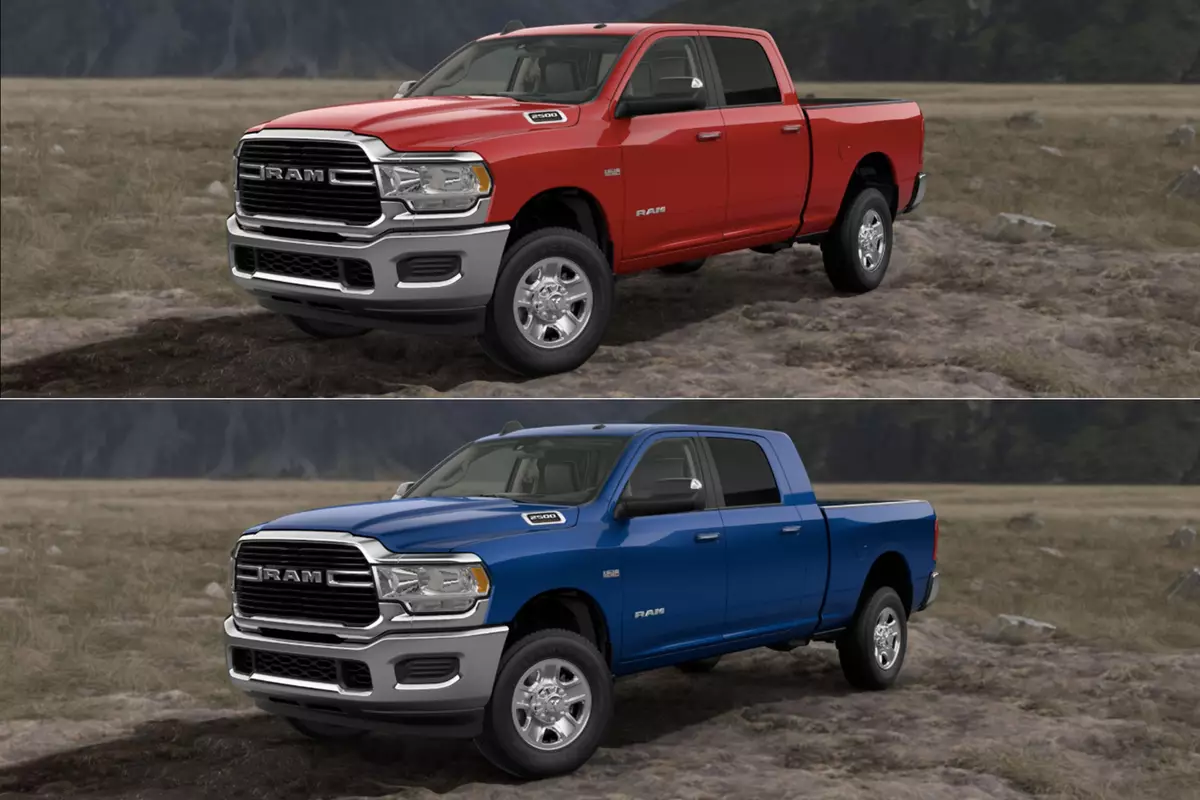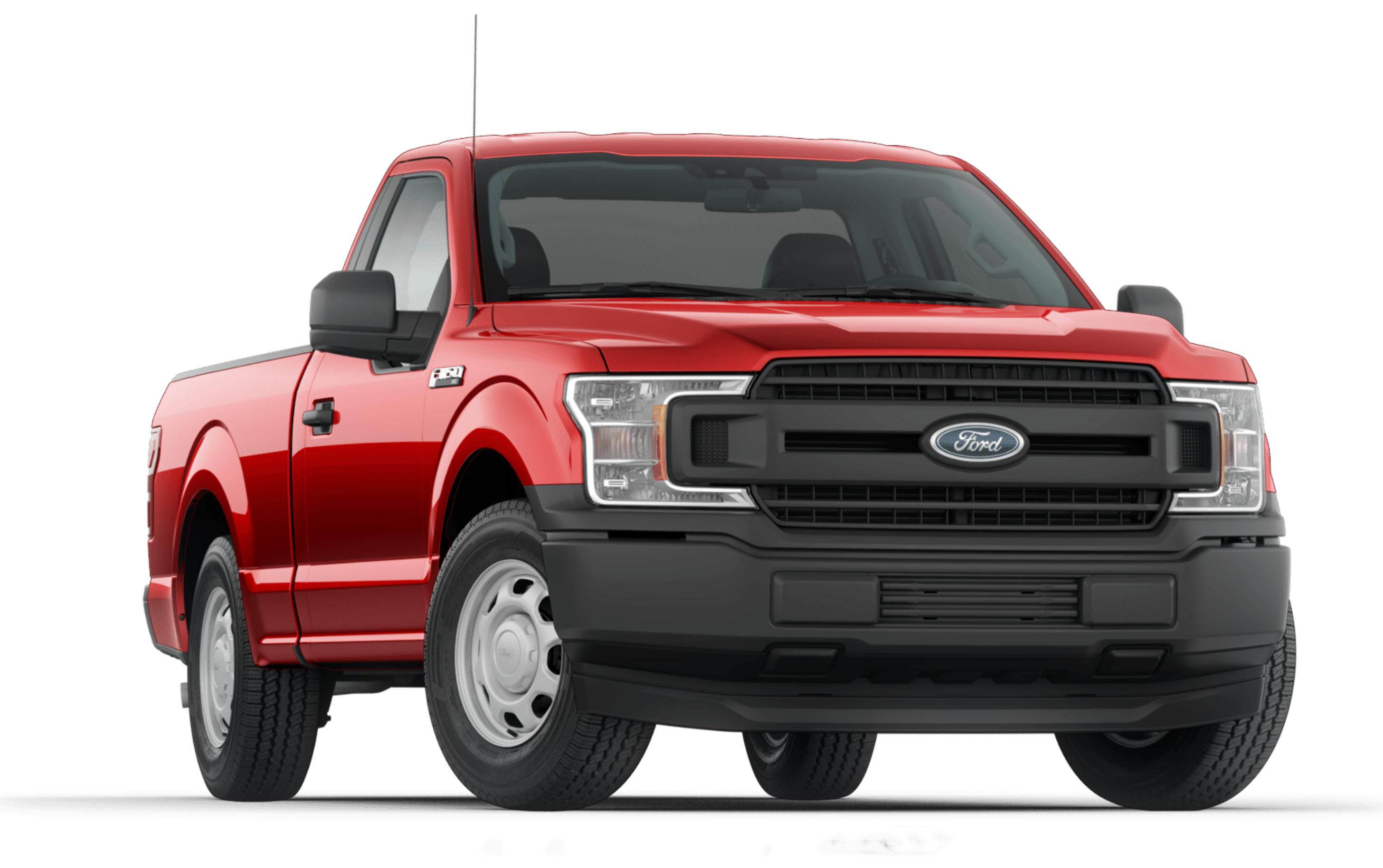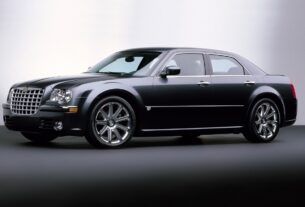When it comes to purchasing a truck, one of the most important decisions you’ll need to make is the cab size. The cab is the passenger compartment of the vehicle, and it can come in three main configurations: crew cab, extended cab, and regular cab. Each cab size has its own unique advantages and disadvantages, and the right choice for you will depend on your specific needs and preferences.
- Tips for Maintaining Your Automobile for Maximum Performance
- Here Are All The New Cars And Crossovers You Can Still Lease For Under $200 A Month
- Can the auto finance market avoid a debt crisis? Industry experts weigh in on alarming signs of instability | National
- Americans Spending Big Money for New Cars
- Americans hate car shopping so much they’d rather give up sex and do taxes
In this comprehensive blog post, we’ll explore the pros and cons of each cab size, helping you determine which one is the best fit for your lifestyle and driving requirements. Whether you’re looking for maximum passenger capacity, ample storage space, or a more compact and maneuverable vehicle, we’ve got you covered. So, let’s dive in and help you make an informed decision on your next truck purchase.
You are watching: Buying a Truck Crew Cab, Extended Cab, or Regular Cab
Crew Cab vs. Extended Cab vs. Regular Cab: Which Is Right for You?

When it comes to truck cab sizes, there are three main options to consider: crew cab, extended cab, and regular cab. Each of these cab configurations offers a unique set of features and benefits, and the right choice for you will depend on your specific needs and preferences.
The Crew Cab
The crew cab, also known as the double cab, is the largest of the three cab sizes. It features four full-size doors and a spacious interior that can comfortably accommodate up to six passengers. Crew cabs are designed to provide ample seating and legroom, making them an excellent choice for families, contractors, or anyone who needs to transport a larger group of people.
One of the key advantages of the crew cab is its versatility. With the ability to seat up to six people, it’s a great option for those who need to transport a mix of passengers and cargo. The spacious interior also allows for the installation of larger, more comfortable seats, as well as additional storage space behind the rear seats.
However, the larger size of the crew cab does come with some drawbacks. It can be more challenging to maneuver in tight spaces, and the increased weight can impact the vehicle’s fuel efficiency. Additionally, the larger cab size may result in a shorter bed length, which can be a consideration for those who need to haul large or bulky items.
The Extended Cab
The extended cab, also known as the super cab or the access cab, is a middle ground between the crew cab and the regular cab. It features two full-size doors in the front and two smaller, rear-hinged doors in the back, providing additional passenger and cargo space.
The extended cab offers a good balance between passenger capacity and cargo space. It can typically accommodate four to six passengers, depending on the specific model and configuration. The additional rear-hinged doors make it easier to access the rear seats, which is particularly useful for transporting children or bulky items.
One of the key advantages of the extended cab is its increased versatility. It provides more interior space than a regular cab, while still maintaining a more compact and maneuverable size compared to the crew cab. This makes it a popular choice for those who need a bit more room but don’t require the full-size capacity of a crew cab.
However, the extended cab’s rear-hinged doors can be less convenient than the full-size doors of the crew cab, and the rear-seat passengers may have less legroom and headroom. Additionally, the extended cab’s shorter bed length may be a consideration for those who need to haul large or bulky items.
The Regular Cab
The regular cab, also known as the standard cab, is the smallest of the three cab configurations. It features two full-size doors and is designed to accommodate two to three passengers, depending on the specific model.
The regular cab is often the most compact and maneuverable option, making it a popular choice for those who prioritize ease of handling and parking, as well as those who primarily use their truck for work-related tasks. The smaller size can also result in better fuel efficiency, which can be a significant consideration for some buyers.
One of the key advantages of the regular cab is its focus on utility. With a longer bed length compared to the crew cab and extended cab, the regular cab is an excellent choice for those who need to haul large or bulky items on a regular basis. It’s also typically the most affordable option among the three cab sizes.
However, the regular cab’s smaller interior can be a drawback for those who need to transport more than two or three passengers. The lack of rear-seat space can also make it less suitable for families or those who need to transport larger groups.
The Pros and Cons of Crew Cabs, Extended Cabs, and Regular Cabs

Each cab size has its own unique set of advantages and disadvantages, and it’s important to weigh these factors carefully to determine which one is the best fit for your needs. Here’s a closer look at the pros and cons of each cab size:
Crew Cab Pros and Cons
Pros:
- Spacious interior with seating for up to six passengers
- Ample legroom and headroom for rear-seat passengers
- Versatile for both passenger and cargo transport
- Comfortable for longer journeys and family trips
Cons:
- Larger size can make the vehicle more challenging to maneuver in tight spaces
- Reduced bed length compared to other cab sizes
- Increased weight can impact fuel efficiency
- Generally more expensive than other cab configurations
Extended Cab Pros and Cons
Pros:
- Provides more interior space and passenger capacity than a regular cab
- Rear-hinged doors offer easy access to the rear seats
- Strikes a balance between passenger capacity and cargo space
- Typically more maneuverable and compact than a crew cab
Cons:
- Rear-seat passengers may have less legroom and headroom compared to a crew cab
- Rear-hinged doors can be less convenient than full-size doors
- Shorter bed length compared to a regular cab
Regular Cab Pros and Cons
Pros:
- Compact size and improved maneuverability
- Longer bed length for better cargo-hauling capabilities
- Typically the most affordable cab configuration
- Optimized for work-related tasks and utility
Cons:
- Limited passenger capacity, with seating for only two to three people
- Less interior space and legroom for rear-seat passengers
- May not be as comfortable for longer journeys or family trips
By understanding the pros and cons of each cab size, you can make an informed decision and choose the one that best fits your specific needs and preferences.
How to Choose the Right Cab Size for Your Truck
Choosing the right cab size for your truck can be a challenging decision, as it depends on a variety of factors, including your intended use for the vehicle, the number of passengers you need to transport, and the amount of cargo you need to haul. Here are some key considerations to help you determine the best cab size for your needs:
Passenger Capacity
One of the primary factors to consider when choosing a cab size is the number of passengers you need to transport. If you frequently have a large group of people to carry, such as a family or a work crew, a crew cab may be the best option, as it can accommodate up to six passengers. If you only need to transport two to four people, an extended cab or a regular cab may be a more suitable choice.
Cargo Space and Hauling Needs
Another important consideration is the amount of cargo and hauling you need to do. If you frequently transport large or bulky items, a truck with a longer bed length, such as a regular cab, may be the better option. Conversely, if you prioritize passenger space over cargo capacity, a crew cab or extended cab may be the better choice, as they typically have a shorter bed length.
Maneuverability and Ease of Use
The size and configuration of the cab can also impact the vehicle’s maneuverability and ease of use. Smaller cabs, such as the regular cab, are generally more compact and easier to maneuver in tight spaces, making them a good choice for city driving or off-road use. Larger cabs, like the crew cab, may be more challenging to park and navigate in tight quarters, but they can offer a smoother and more comfortable ride, especially on longer journeys.
Budget and Cost Considerations
See more : Buying A Pickup Everything You Need To Know
Finally, the cab size can also have a significant impact on the overall cost of the truck. Larger cabs, such as the crew cab, are typically more expensive than their smaller counterparts. If your budget is a primary concern, a regular cab or extended cab may be the more affordable option.
By carefully considering these factors, you can determine the cab size that best suits your needs and preferences, ensuring that you choose a truck that meets your requirements and provides the best value for your money.
The Ultimate Guide to Truck Cab Sizes
To help you make a more informed decision, let’s take a deeper dive into the specific characteristics and considerations for each cab size:
Crew Cab
Interior Space and Passenger Capacity: Crew cabs are known for their spacious interiors and ample passenger capacity. They typically feature four full-size doors and can comfortably seat up to six people, with generous legroom and headroom for all occupants. This makes them an excellent choice for families, carpools, or anyone who needs to transport a larger group on a regular basis.
Cargo Capacity and Bed Length: One of the trade-offs with the crew cab’s spacious interior is a shorter bed length compared to other cab configurations. Crew cabs typically have a bed length ranging from 5.5 feet to 6.5 feet, which may be a consideration for those who need to haul larger or bulkier items.
Maneuverability and Towing Capacity: Due to their larger size, crew cabs can be slightly more challenging to maneuver in tight spaces, such as crowded urban areas or narrow driveways. However, they generally have good towing capacity, making them a suitable choice for those who need to tow heavy loads on a regular basis.
Fuel Efficiency and Cost: Crew cabs tend to have the highest curb weight among the three cab configurations, which can impact fuel efficiency. They are also typically the most expensive option, with higher sticker prices compared to extended cabs and regular cabs.
Extended Cab
Interior Space and Passenger Capacity: Extended cabs offer a middle ground between the spaciousness of the crew cab and the compactness of the regular cab. They typically feature two full-size doors in the front and two smaller, rear-hinged doors in the back, providing additional passenger and cargo space. Most extended cabs can accommodate four to six passengers, depending on the specific model and configuration.
Cargo Capacity and Bed Length: The extended cab’s design provides more interior space than a regular cab, but the bed length is usually shorter than a regular cab, typically ranging from 6 feet to 8 feet. This can be a consideration for those who need to haul larger or bulkier items.
Maneuverability and Towing Capacity: Extended cabs are generally more maneuverable than crew cabs, thanks to their slightly smaller size. They also typically have good towing capacity, making them a versatile option for various hauling and towing needs.
Fuel Efficiency and Cost: Extended cabs generally offer a balance between fuel efficiency and cost, with a slightly higher curb weight and price tag compared to regular cabs, but lower than crew cabs.
Regular Cab
Interior Space and Passenger Capacity: Regular cabs are the most compact of the three cab configurations, featuring two full-size doors and typically seating two to three passengers. While the interior space is more limited, regular cabs are often the most utilitarian and focused on work-related tasks.
Cargo Capacity and Bed Length: One of the key advantages of the regular cab is its longer bed length, which typically ranges from 6 feet to 8 feet. This makes it an excellent choice for those who need to transport large or bulky items on a regular basis.
Maneuverability and Towing Capacity: Regular cabs are the most compact and maneuverable of the three cab sizes, making them a great option for city driving, tight spaces, and off-road use. They also generally have good towing capacity, though it may be slightly lower than the larger cab configurations.
Fuel Efficiency and Cost: Regular cabs are typically the most fuel-efficient and cost-effective option among the three cab sizes, with a lower curb weight and a more affordable price tag.
By understanding the specific characteristics and considerations of each cab size, you can make a more informed decision on which configuration best suits your needs and preferences.
Crew Cab vs. Extended Cab: Which Offers the Best Value?
When it comes to choosing between a crew cab and an extended cab, the decision often boils down to finding the right balance between passenger capacity, cargo space, and value. Let’s take a closer look at how these two cab configurations compare:
Passenger Capacity
The crew cab is the clear winner in terms of passenger capacity, with seating for up to six people. The extended cab, on the other hand, can typically accommodate four to six passengers, depending on the specific model and configuration.
If you frequently need to transport a larger group of people, the crew cab’s spacious interior and additional seating make it the more suitable choice. However, if you only occasionally need to carry more than four passengers, the extended cab may be a more cost-effective option.
Cargo Space and Bed Length
When it comes to cargo capacity and bed length, the extended cab has a slight advantage over the crew cab. Crew cabs typically have a shorter bed length, ranging from 5.5 feet to 6.5 feet, while extended cabs offer a bed length of 6 feet to 8 feet.
If you regularly need to haul large or bulky items, the extended cab’s longer bed may be the better choice. However, if your cargo needs are more modest, the crew cab’s slightly shorter bed may still be sufficient, and you may be willing to sacrifice some cargo space for the added passenger capacity.
Cost and Value
One of the key factors in determining the best value is the cost. Crew cabs are generally the most expensive of the three cab configurations, with higher sticker prices compared to extended cabs and regular cabs.
If budget is a primary concern, the extended cab may offer better value, as it provides more interior space and passenger capacity than a regular cab, without the premium price tag of a crew cab. However, if you’re willing to invest a bit more, the crew cab’s superior passenger comfort and versatility may be worth the additional cost.
Ultimately, the decision between a crew cab and an extended cab will depend on your specific needs and priorities. If you prioritize passenger capacity and comfort, the crew cab may be the better choice. If cargo space and cost-effectiveness are more important, the extended cab may be the more valuable option.
Regular Cab vs. Extended Cab: Which Is More Versatile?
When comparing the regular cab and the extended cab, the key consideration is often the balance between utility and versatility. Let’s explore how these two cab configurations measure up in terms of their versatility:
Passenger Capacity
In terms of passenger capacity, the extended cab has a clear advantage over the regular cab. While regular cabs typically accommodate two to three passengers, extended cabs can seat four to six people, depending on the specific model.
See more : The most and least reliable car brands for 2024, according to Consumer Reports
If you frequently need to transport a larger group of people, the extended cab’s additional seating capacity makes it the more versatile option. However, if you only occasionally need to carry more than two or three passengers, the regular cab may be a more practical choice.
Cargo Space and Bed Length
When it comes to cargo space and bed length, the regular cab has the upper hand. With a longer bed, typically ranging from 6 feet to 8 feet, the regular cab is better equipped to haul larger or bulkier items, such as construction materials, landscaping supplies, or recreational equipment.
The extended cab’s shorter bed length, typically 6 feet to 8 feet, may be a limiting factor for those who need to transport oversized or heavy cargo on a regular basis. However, the extended cab’s additional interior space can still be useful for carrying smaller items or tools.
Maneuverability and Ease of Use
In terms of maneuverability and ease of use, the regular cab has a distinct advantage. With its more compact size and lighter weight, the regular cab is generally easier to navigate in tight spaces, such as city streets, crowded parking lots, or off-road environments.
The extended cab’s larger size and additional weight can make it slightly less maneuverable in certain situations. However, the extended cab’s improved passenger capacity and interior space may be worth the trade-off for some buyers.
Versatility and Adaptability
When it comes to overall versatility and adaptability, the regular cab and the extended cab each offer unique strengths. The regular cab is the more utility-focused option, better suited for work-related tasks, hauling heavy loads, and navigating challenging environments.
The extended cab, on the other hand, is the more versatile choice, offering a better balance between passenger capacity and cargo space. This makes it a suitable option for a wider range of uses, from work-related duties to family transportation and recreational activities.
Ultimately, the choice between a regular cab and an extended cab will depend on your specific needs and priorities. If your primary focus is on utility and cargo-hauling capabilities, the regular cab may be the more versatile option. If you require a balance between passenger capacity and cargo space, the extended cab may be the better choice.
The Pros and Cons of Each Truck Cab Size
To summarize the key points, let’s take a look at the pros and cons of each truck cab size:
Crew Cab Pros: -Spacious interior with ample legroom and headroom for passengers
- Comfortable seating for up to six passengers, ideal for larger families or groups
- Additional storage space behind the rear seats for carrying smaller items or tools
Crew Cab Cons:
- Generally higher sticker prices compared to other cab configurations
- Longer wheelbase may affect maneuverability in tight spaces or off-road conditions
- Slightly shorter bed length may limit cargo-hauling capabilities for larger items
Extended Cab Pros:
- Additional interior space compared to regular cabs, suitable for carrying extra passengers or cargo
- Longer bed length provides more room for hauling larger or bulkier items
- More cost-effective than crew cabs, offering a good balance between value and functionality
Extended Cab Cons:
- Limited legroom and seating comfort for rear passengers compared to crew cabs
- Smaller rear doors may inconvenience access to the back seats
- Shorter wheelbase may impact stability when towing heavy loads or driving at high speeds
Regular Cab Pros:
- Compact size and lightweight design for improved maneuverability and ease of use
- Longer bed length for maximum cargo capacity and hauling capabilities
- Generally lower sticker prices compared to crew cabs and extended cabs
Regular Cab Cons:
- Limited passenger capacity, typically accommodating only two to three passengers
- Minimal interior space and storage options for smaller items or tools
- Less versatile in terms of balancing passenger comfort with cargo-hauling capabilities
By understanding the pros and cons of each truck cab size, you can make an informed decision based on your specific needs and priorities. Whether you prioritize passenger comfort, cargo-hauling capabilities, cost-effectiveness, or versatility, there is a truck cab size that can meet your requirements.
Choosing the Right Truck Cab Size for Your Needs
When it comes to selecting the right truck cab size for your needs, consider the following factors to help guide your decision:
1. Passenger Capacity:
Evaluate how many people you need to transport regularly. If you frequently have more than four passengers, a crew cab may be the most suitable option. For smaller groups or occasional passengers, an extended cab or regular cab could suffice.
2. Cargo-Hauling Requirements:
Consider the type and size of cargo you need to transport. If you regularly haul large or bulky items, opt for a longer bed length offered by an extended cab. For lighter or more modest cargo needs, a crew cab with a slightly shorter bed may still be sufficient.
3. Budget and Value:
Determine your budget and assess the overall value provided by each cab size. While crew cabs offer superior passenger comfort, they also come with a higher price tag. Extended cabs provide a good balance between cost and functionality, while regular cabs are generally more affordable.
4. Intended Use and Lifestyle:
Think about how you plan to use your truck on a day-to-day basis. If you require a vehicle for work-related tasks, such as hauling equipment or materials, a regular cab may be best. For a mix of work and personal use, an extended cab could offer the versatility you need.
5. Future Considerations:
Anticipate any future changes in your lifestyle or transportation needs. If your family is growing or if you foresee needing more passenger or cargo space down the line, it may be wise to choose a cab size that can accommodate potential changes.
By carefully evaluating these factors and weighing the advantages and disadvantages of each truck cab size, you can choose the option that best aligns with your preferences and requirements. Whether you prioritize passenger space, cargo capacity, affordability, or versatility, there is a truck cab size that can meet your unique needs.
Conclusion
In conclusion, the choice between a crew cab, extended cab, or regular cab ultimately boils down to your individual preferences, priorities, and intended use for the truck. Each cab size offers distinct advantages and considerations, from passenger capacity and cargo-hauling capabilities to cost-effectiveness and versatility.
If you value ample passenger space and comfort for a larger group of travelers, a crew cab may be the ideal choice. For a good balance between seating capacity and cargo space, an extended cab could offer the versatility you need. And if you prioritize utility, maneuverability, and cost efficiency, a regular cab might be the most practical option.
Regardless of your decision, make sure to carefully assess your requirements, budget constraints, and future needs before settling on a truck cab size. By choosing wisely, you can enjoy a vehicle that not only meets your current demands but also adapts to your lifestyle and preferences over time.
Source: https://us.congthucvatly.com
Category: Car


